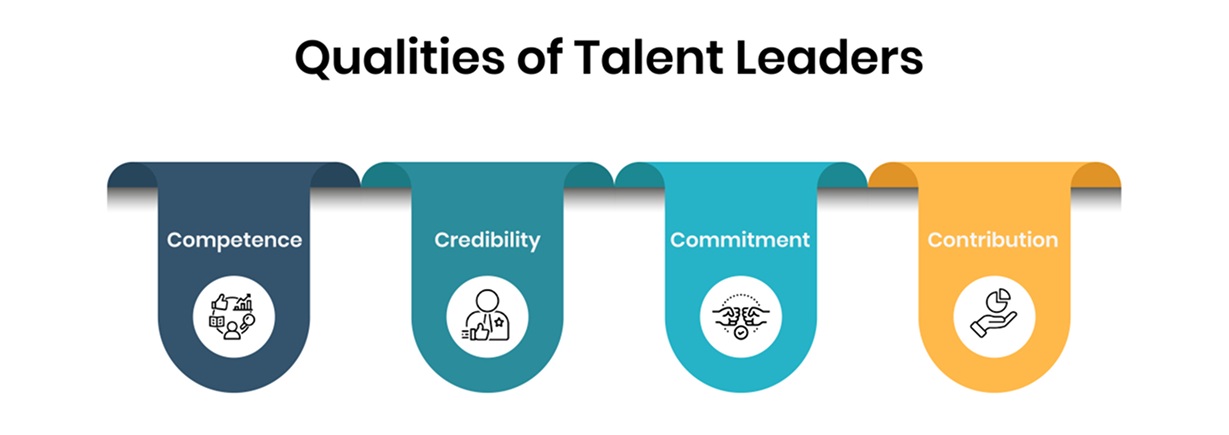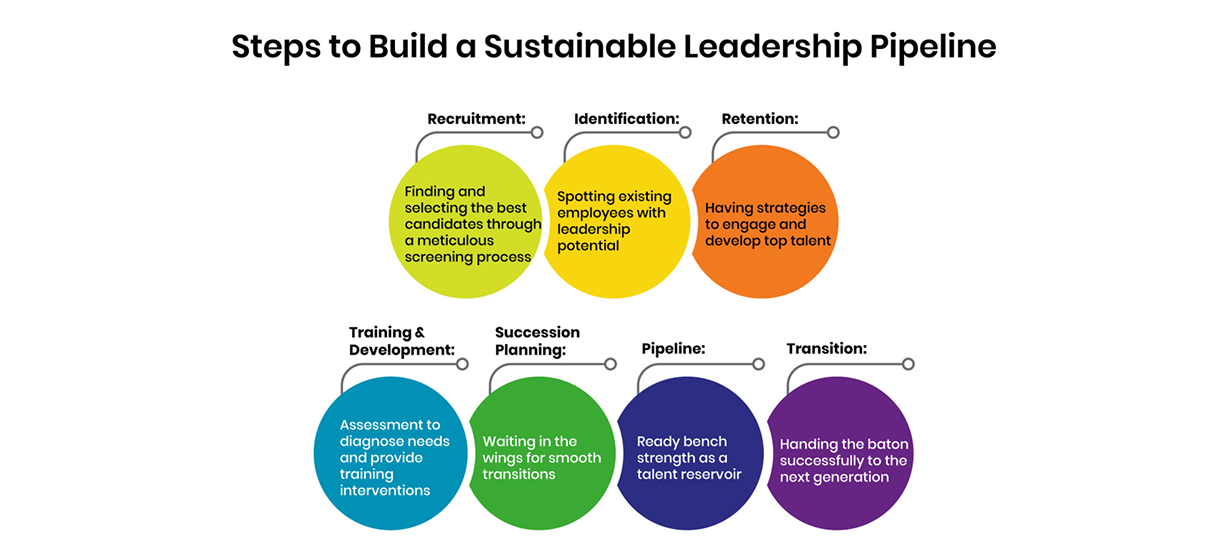
"Leaders who tend only to business often end up losing the people and the business. But leaders who tend to the people usually build up the people—and the business." - John C. Maxwell
Talent management has become a strategic priority for organizations seeking to recruit, develop, and retain top talent in an increasingly competitive global environment. Effective talent management enables companies to drive innovation, execute business strategy, and gain competitive advantage. Leadership plays a pivotal role in talent management, from shaping recruitment and onboarding to overseeing employee development, engagement, and retention.
As the war for talent intensifies, leadership across all levels must make talent management a key focus area. Leaders drive cultural transformation, cascade strategic vision, provide coaching and mentoring, champion diversity and inclusion, and build an employer brand that attracts top talent. This article explores the evolving role of leadership in talent management.
Organizations must shift their focus from developing leaders only at the top to nurturing leadership at all levels. The myth that only senior executives need leadership training must be debunked. On the contrary, organizations must spot leadership potential early and groom talent systematically into leadership roles.
To develop a robust leadership pipeline, companies need to first build a leadership competency framework. They can then assess employees against those competencies and provide developmental interventions. Assessments must evaluate not only performance but also behaviors indicative of leadership potential. Moreover, organizations must take a long-term perspective while readying employees for leadership positions.
In the 1990s, “talent management” gained prominence as a strategy for recruiting, developing and retaining top talent to drive organizational success. However, the concept must be expanded to “talent leadership” in today’s dynamic, globalized environment marked by complexity and knowledge workers. Developing and leading talented humans will only grow more critical for organizational excellence.
Talent leadership goes beyond merely training high-potential employees identified in the leadership pipeline. It is a holistic system spanning talent acquisition, development, retention, succession planning, and building a robust pipeline.
Specifically, talent leadership refers to having a keen eye for spotting and recruiting top talent with the right attitude and potential, grooming them via development interventions, and preparing leaders to step up as organizational needs evolve. It is the heartbeat of building a sustainable organization.
Talent leaders need to demonstrate four key qualities - competence, credibility, commitment, and contribution. Let's examine each of these in detail:

Competence refers to the expertise and capability talent leaders possess in their specific domain of work. To influence people and processes, talent heads need in-depth know-how of their field. Some ways talent leaders showcase competence are:
The second non-negotiable attribute for talent heads is credibility. Leaders who walk their talk and demonstrate integrity through alignment between their words and actions earn credibility.
Keyways talent heads build credibility include:
Role model talent leaders also demonstrate unflinching commitment to developing people and nurturing leaders. Their passion and dedication for the cause are visible through:
Finally, talent heads must align efforts to strategy and deliver material benefits through:
In short, strategic alignment, operational excellence and analytics-backed gains separate effective talent leaders delivering transformative gains.
Talent management today faces two prime challenges:
The war for talent makes attracting the best candidates an uphill task. Companies struggle to remain competitive in sourcing quality talent or fail to effectively target and reach potential candidates. Key reasons include:
To overcome this, companies need a scientific approach to shortlisting resumes and carefully evaluating each candidate's potential during recruiting to select the right people.
Retaining and rewarding top talent has become harder but even more critical for organizational success. It requires concerted efforts towards talent engagement and development rather than eyeing greener pastures outside. Key retention challenges include:
Organizations must invest efforts into understanding and addressing talent concerns through stay interviews and engagement initiatives. Providing clear career pathways with development opportunities and recognition help retain top talent.
Thus, with demographic and workplace changes, effective talent leadership in contemporary times has become enormously tough. Researchers, intellectuals, practitioners and HR experts need to address these talent challenges.
While talent management focuses on recruitment, development and retention, talent leadership is a more extensive and proactive approach to building a sustainable leadership pipeline. It includes:

Talent leadership starts with recruiting the right talent through a meticulous screening process. This involves carefully reviewing resumes to shortlist potential candidates who have the skills, competencies and mindset to take on leadership roles.
The recruitment process should focus on evaluating candidates not just based on their hard skills or experience but also on leadership competencies like strategic thinking, communication, collaboration, innovation and change management. Psychometric assessments can be used to gauge their cognitive abilities, emotional intelligence, integrity and organizational fit.
Interviews must be structured around leadership success profiles to assess the leadership spark in candidates. Situational and behavioral questions can determine how they have demonstrated leadership in the past and can probe their inclination to take responsibility, challenge status quo, inspire teams and drive change.
Rather than relying solely on recommendations, it is critical to thoroughly reference check a candidate’s background to validate credentials and performance. By speaking to previous managers, one can gain insights into accomplishments as well as development needs of the candidate.
Extending job offers to selected candidates requires presenting comprehensive compensation, benefits and career growth propositions that give a preview into the talent development culture of the organization. This allows one to win over the best talent by showcasing the leadership pipeline.
Apart from external hiring, existing employees within the organization must be reviewed for their aptitude and aspiration to take on leadership mantle. High potential employees exhibit certain qualities that make them suitable for grooming:
Potential must be paired with readiness. High-potential employees may not yet have the required skills and work experience. But with the right development plan over time, they can blossom into well-rounded leaders.
A robust talent review process must be in place to systematically evaluate performance, ability and motivation at all levels and map out development plans to get them ready for key positions.
Merely attracting and identifying high-potential employees is not enough, there must be an engaging employee experience to retain them. This requires creating a talent-centric culture focused on employee wellbeing, constant learning and career growth.
Providing the right compensation, benefits and incentives is important but not sufficient for retention. Opportunities for personal and professional development are equally critical. This means providing platforms for continuous skills upgradation, job rotations, special projects, innovation challenges, gig assignments etc.
Building a coaching and mentoring culture allows employees to learn on the job from senior leaders. Establishing open channels for constant feedback fosters a high trust environment.
HR must measure engagement levels through surveys and exit interviews to identify pain points early on. Concerns must be addressed through relevant policy changes on work-life balance, remote work, growth paths etc.
Growth opportunities must be transparently communicated. High-potential employees identified in the talent pipeline must see a clear career progression path to leadership roles. This gives them the motivation to stick around while preparing for enhanced responsibilities.
Structured assessments must diagnose development areas in the leadership competencies of high-potential employees. Assessments can range from 360 feedback, personality and emotional intelligence tests to simulations and business case analysis.
This allows training needs to be identified in skills like:
Training programs must then be customized to address these needs through fit-for-purpose interventions like job rotations, stretch assignments, cohort-based leadership development programs, executive coaching, e-learning courses, workshops, seminars and conferencing.
On the job development should focus on real work challenges that test skills. Project leadership roles allow hands-on application of concepts. Job rotations provide exposure to diverse functions.
Multi-modal programs allow blended learning on technical, business and leadership skills. Certifications in niche domains can also be sponsored to boost expertise.
The 70-20-10 model provides a balanced mix of challenging assignments (70%), developmental relationships (20%) and formal training (10%) for a holistic experience.
Succession planning in talent leadership ensures continuity of leadership by preparing successors in advance through a planned development journey. It involves:
Effective knowledge transfer must occur from predecessors through mentoring and shadowing. Standards of performance must be clearly outlined for the successor to meet expectations. Career planning conversations must discuss aspirations of talent and offer clarity into future possibilities. This allows them to willingly undertake interim development assignments in the interest of long-term succession rewards.
The talent pipeline represents a reservoir of leadership talent mapped to business critical positions across levels - from first time managers to senior executives.
It serves as a supply line of qualified successors by developing high-potential and high-performing employees much ahead through planned job rotations, stretch assignments, capability building interventions and transitional coaching.
The pipeline talent is objectively evaluated much like a leadership talent grid to determine when they will be ready - now, in 1-2 years, in 2-5 years or in the long run. Development plans are charted out accordingly.
A pipeline maturity model helps assess how robust the succession pipeline is based on:
The pipeline must represent diversity in experience, skills and demographics to meet varied needs of the future. It enhances bench strength making talent more agile and mobile to address planned and unplanned needs.
Leadership transitions are inevitable in the talent lifecycle due to retirements, new priorities, higher roles or external opportunities. Smooth transitions require early planning, clarity in expectations and execution discipline.
Once successors are identified, overlapping transition periods must be planned where incoming leaders work closely with predecessors before eventually assuming full responsibility.
The outgoing leader plays an advisory role while giving the successor enough room to grow into the position. A transition checklist outlines key knowledge transfer areas.
Since transitions can be anxiety provoking for teams, leaders must over-communicate to alleviate uncertainty. Teams must be prepared by introducing the successor and reinforcing continuity of vision and priorities.
In the initial months, new leaders must consciously embrace listened leadership to understand team dynamics before driving change. Core team members can provide situational coaching to navigate landmines.
After transitions, successors must check-in periodically with predecessors as mentors. But once settled, successors must stamp their own leadership style and vision to truly own the baton.
Given their specialized expertise in people management, HR leaders are best positioned to champion talent leadership in organizations. Using their skills in change management, capability building, cultural stewardship and consulting, HR heads can spearhead best practices in talent and leadership development for organizational resilience.
Specifically, HR can create competency models, strengthen recruitment methodologies using assessments, revamp onboarding, facilitate performance management processes, contribute fresh ideas for retention and training, lead succession planning and build the talent pipeline.
Since talent leadership spans the employee lifecycle, HR professionals must step up as stewards and partners to business heads in the exciting domain of talent management.
Talent leadership that focuses on meticulously bringing on-board high-quality talent and then investing rigorously in their development for future leadership roles is the key to sustainable organizations. As business complexity and uncertainty continue to rise globally across all sectors and industries, there is no competitive advantage more enduring than leadership and talent excellence.

CredBadge™ is a proprietary, secure, digital badging platform that provides for seamless authentication and verification of credentials across digital media worldwide.
CredBadge™ powered credentials ensure that professionals can showcase and verify their qualifications and credentials across all digital platforms, and at any time, across the planet.

Please enter the License Number/Unique Credential Code of the certificant. Results will be displayed if the person holds an active credential from TMI.